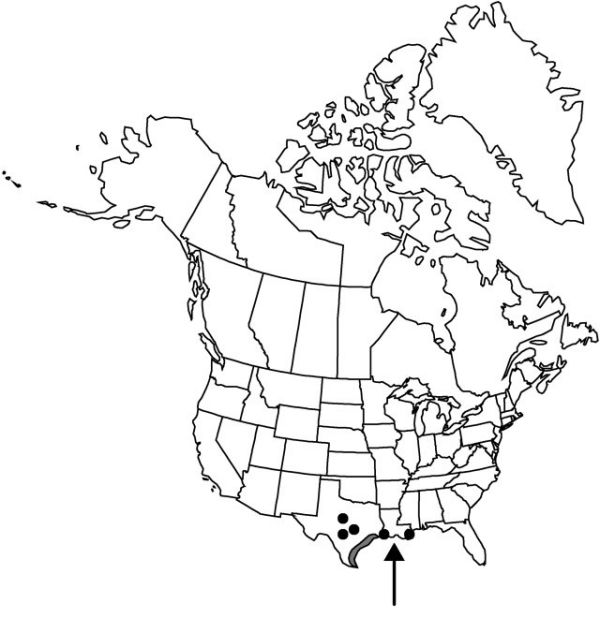Sisyrinchium biforme
Bull. Torrey Bot. Club 28: 575. 1901.
Herbs, perennial, cespitose, pale to olive green or occasionally bronze when dry, to 4.7 dm, not glaucous; rhizomes scarcely discernable. Stems simple or branched, with 1 node, 1.1–1.9 dm wide, glabrous, margins entire, usually same color and texture as stem body but occasionally drying lighter; internode 17.2–21.3 cm, equaling or shorter than leaves, with 2 branches. Leaf-blades glabrous, bases not persistent in fibrous tufts. Inflorescences borne singly; spathes green, obviously wider than supporting branch, glabrous, keels entire; outer 13–19.6 mm on branched stems, 19.3–25.6 mm on simple stems, 1.2 mm longer to 2 mm shorter than inner on branched stems, 1.5–4.2 mm longer than inner on simple stems, tapering evenly towards apex, margins basally connate 3.9–6.1 mm; inner with keel evenly curved, hyaline margins 0.2–0.5 mm wide, apex acuminate to acute, ending 0.2–0.8 mm proximal to green apex on branched stems, sometimes lobed and exceeding green apex on simple stems. Flowers: tepals light blue, bases yellow; outer tepals 5–13 mm, apex rounded, short-aristate; filaments connate ± entirely, stipitate-glandular basally; ovary similar in color to foliage. Capsules light to dark-brown, ± globose to ± fusiform, 5–7 mm; pedicel usually erect. Seeds globose to obconic, occasionally with slight depression, 1–1.3 mm, rugulose. 2n = 96.
Phenology: Flowering spring–early summer.
Habitat: Meadows or swales within stabilized coastal dunes, sandy river banks inland
Elevation: 0–200 m
Distribution

La., Tex., adjacent coastal n Mexico
Discussion
Selected References
None.
Lower Taxa
"obviously wider" is not a number.